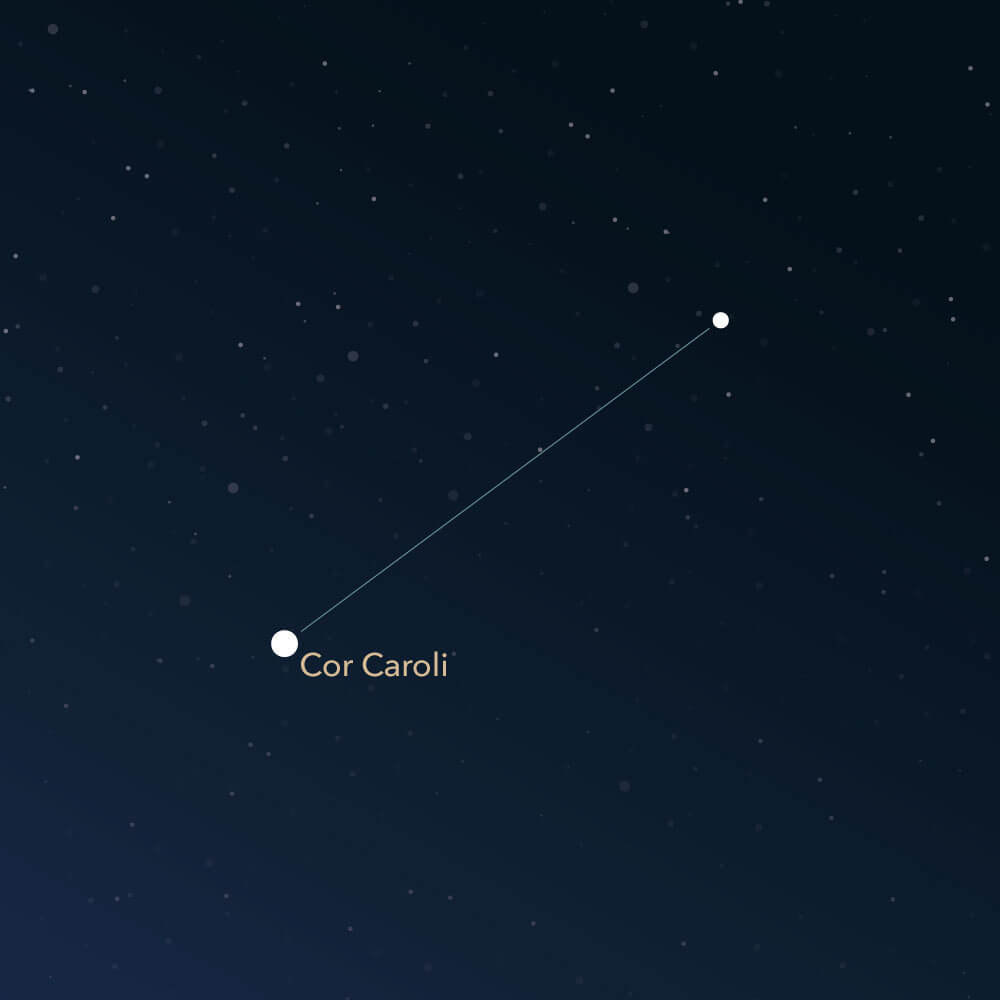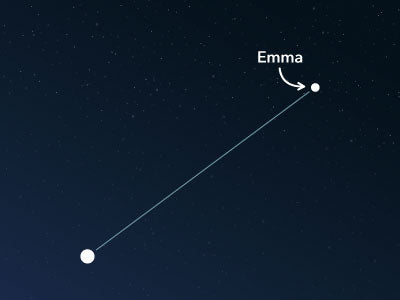The constellation Canes Venatici
Characteristics
- Other names / Symbolism
- Hunting Dogs
- Hemisphere
- Northern hemisphere
- Visibility
- April - July
- Area
- 465 deg²
- Brightest star
- Cor Caroli (HIP number 63125)
- Specialties
- Globular clusters, galaxies

The Canes Venatici, Latin for hunting dogs, is an inconspicuous constellation that was introduced as an independent constellation only in 1690. Despite the faint stars, it has some exciting deep-sky objects to offer.
Hemisphere, visibility, and area
The constellation Canes Venatici lies north of the equator and is visible from all places in the northern hemisphere. South of the equator, it can only be seen up to the 38th parallel. This corresponds to regions such as Melbourne in Australia or Mar del Plata in Argentina.
Up to 43 degrees north latitude, the constellation is circumpolar, meaning it is visible year-round. From more southern regions, it can be observed from April to July. May, in particular, offers a good view of the Canes Venatici.
The constellation spans about 465 square degrees across the sky and thus belongs to the middle range compared to all other 88 constellations.
Finding it is not easy, as the constellation is only visualized with its two brightest stars, which form a simple straight line. The brightest star is Cor Caroli (Latin: α Canum Venaticorum, Alpha Canum Venaticorum). Its proper name Cor Caroli translates to "heart of Charles" and was introduced in honor of the British kings Charles I and Charles II. It is a double-star system located about 110 light-years away, with an apparent magnitude of approximately 2.84.
To locate the Canes Venatici in the night sky, it is helpful to look for the adjacent constellations. To the north and east is the Ursa Major (commonly known as Great Bear or Big Dipper), to the west lies Boötes, and to the south is Coma Berenices.
Specialties in the constellation
The Canes Venatici lies in an interesting region of the sky where several exciting objects have been discovered, such as a globular cluster and several galaxies.
In the area of the constellation, the globular cluster NGC 5272, also known as M3 (Messier 3), can be found. The second name comes from the French astronomer Charles Messier, who discovered it in May 1764. M3 contains around half a million stars and is, therefore a very large cluster. Its distance from the solar system is estimated to be 34,000 light-years.
M3 can already be perceived as a nebulous spot with a pair of binoculars. In a larger telescope, some individual stars can be discerned. It lies precisely between the star Arcturus (the brightest star in the constellation Boötes) and Cor Caroli.
To the north of the Canes Venatici, under the handle of the Ursa Major, lies the large spiral galaxy NGC 5194, also known as M51 (Messier 51). It was also discovered by the French astronomer Charles Messier in October 1773 and is now also known as the Whirlpool Galaxy.
In a telescope, the galaxy can be seen as a spot. In larger telescopes, the spiral arms become visible, as well as the shape of a whirlpool, which is also responsible for its particular name. Those who look closely can also perceive the small companion galaxy NGC 5195.

Mythology and history
In ancient times, Canes Venatici was associated with the constellation Ursa Major. Later, around the 9th century, due to a translation error, the stars were assigned to the constellation Boötes. When translated from Greek to Arabic, the word for the "billets" of Boötes was missing, so it was described as a "rod with a hook" (al-`asa dhat al-kullab). A confusion between the words "kullab" and "kilab" (dog) led to the current Canes Venatici being seen as the "rod with dogs" of Boötes.
The brighter star of the constellation is said to be a reminder of the English kings Charles I and II. It is said to have shone particularly brightly on the day of Charles I's execution in 1649, so the English cartographer Francis Lamb named the star after him in 1673. Only in 1688 were the two stars introduced as their own constellation by Johannes Hevelius on the celestial map.
PublishedRead more interesting articles

An overview of all 88 constellations
Learn more about all 88 constellations and read interesting information about the mythology, visibility, and features.

Planetarium App
Discover the night sky with our planetarium app!
Available for iOS and Android.

Name a star in the constellation Canes Venatici
Name a star in a constellation and create something that lasts for eternity.